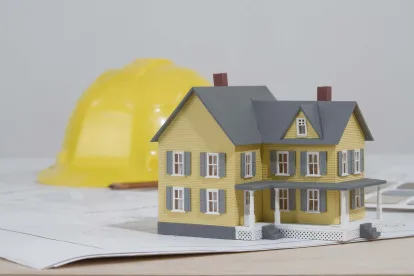Closing another loophole in law of nonconforming structures and uses, the Massachusetts Appeals Court has held that no zoning relief is required to tear down and reconstruct a nonconforming use that is dimensionally conforming. Welch-Philippino v. Zoning Board of Appeals of Newburyport, 86 Mass. App. Ct. 258 (2014).
The Proposed Nursing Home Expansion
The defendants owned a 100–bed nursing home facility built in 1968. This commercial structure was situated on a large conforming lot in a residential zone and complied with the dimensional requirements of the local zoning ordinance. However, the nursing home use pre-dated the adoption of the local zoning ordinance and, as such, was a lawful nonconforming use.
Seeking to replace the structure with a new 121–bed facility that would again comply with the dimensional requirements of the zoning ordinance, the defendants sought and received a special permit from the local zoning board of appeals (board). The abutters appealed under the Zoning Act. On review, the Land Court concluded that the project (1) did not constitute a “change or substantial extension” of the preexisting nonconforming commercial use, and (2) was therefore permissible as of right under the nonconformity provision of the Zoning Act, Massachusetts General Laws chapter 40A, § 6, (Section 6) and the local zoning ordinance.
On appeal from the judgment, the abutters contended that a conforming structure used for a nonconforming purpose must be treated as a nonconforming structure under Section 6 which requires zoning relief for any reconstruction.
Nonconforming Uses Are Not Automatically Nonconforming Structures
The critical passage of Section 6 provides in part:
Except as hereinafter provided, a zoning ordinance or by-law shall not apply to structures or uses lawfully in existence… but shall apply to any change or substantial extension of such use… to any reconstruction, extension or structural change of such structure….
Explaining this language, the Court found that while nonconforming uses lose their protection when there is “any change or substantial extension of such use,” nonconforming structures lose their protection when, among other circumstances, there is “any reconstruction, extension or structural change of such structure.” Where the defendants’ application did not concern changes to a nonconforming structure, the Land Court judge “appropriately directed his focus to the sole question of import: whether the project proposed a “change or substantial extension of the nonconforming use.”
To answer that question, the judge correctly applied the well-established test that examines: (1) whether the proposed use reflects the nature and purpose of the use prevailing when the zoning ordinance took effect, (2) whether there is a difference in the quality or character, as well as the degree, of use, and (3) whether the proposed use is different in kind in its effect on the neighborhood. Measured against these factors, the judge concluded that the project did not amount to a “change or substantial extension” of the use because, among other reasons, the additional 21 nursing home beds would not alter the “quality, character, or degree” of that use or have any “adverse effect on the neighborhood different in kind from the existing use….” As a result, the Land Court correctly found that the project permissible as of right. The Appeals Court affirmed these findings.
On appeal, the abutters’ attack centered on the trial judge’s conclusion that the project did not fall within the Section 6 limitation on “reconstruction, extension or structural change” of a nonconforming structure. They argued that a nonconforming structure includes any “structure devoted to a nonconforming use even when there is no nonconformity in the structure itself.” This view was dismissed by the Court as “fundamental[ly] flaw[ed]” where it “measure[ed] structural conformity by reference to the use of the structure and ignored the fact that the “statute treats structures and uses differently.” The Court “discern[ed] nothing in the language of Section 6 that reflect[ed] the Legislature's intent to treat the nonconforming use of a structurally conforming building as creating structural nonconformity.”




 />i
/>i
